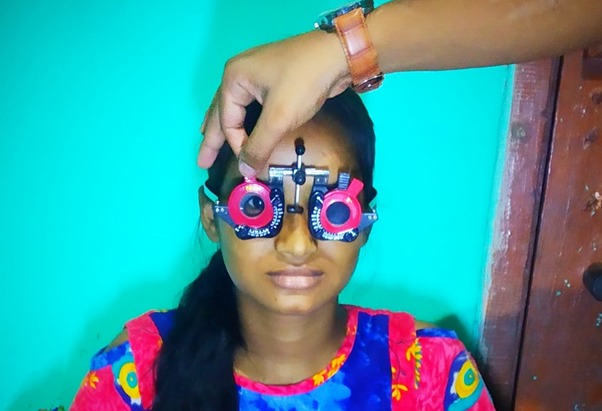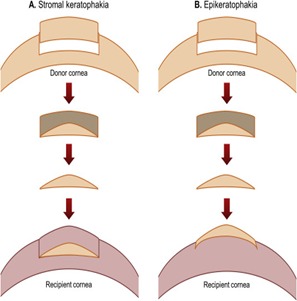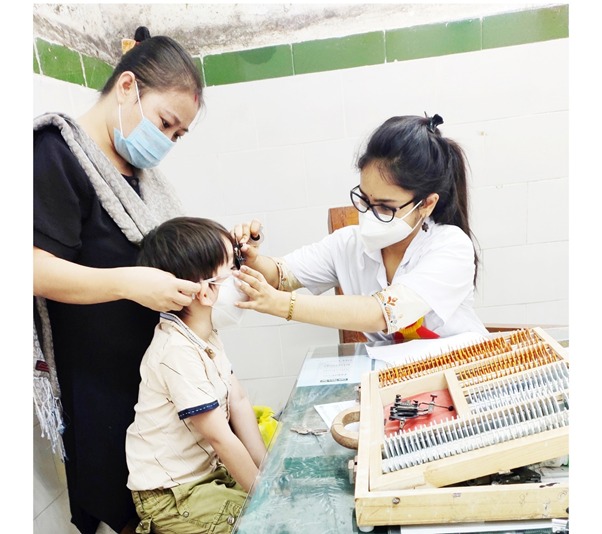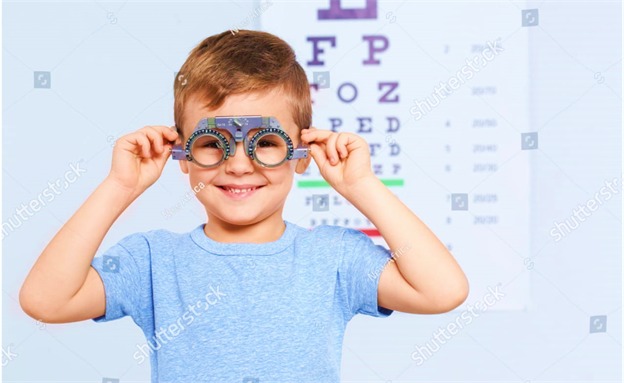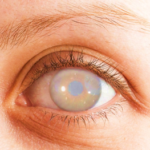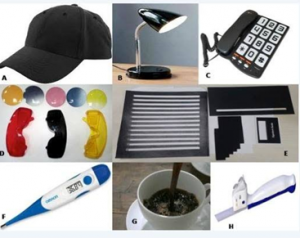Anisometropia means where there is significant difference in dioptoric power between two eyes, so there is unequal focus between two eyes.
It’s can be due to two reasons firstly congenital and developmental anisometropia occurs due to difference retinal growth of two eyeballs. And secondly acquired anisometropia may occurs under the following situation – uniocular aphakia after removal of circumstance, trauma of the eye, keratoplasty in one eye, implantation of IOL of wrong power, etc.
Six clinical types of anisometropia are-
i. Simple anisometropia – In this case, one eye is normal (emmetropic) and other eye is either myopic(simple myopic anisometropia) or hypermetropic (simple hypermetropic anisometropia).
ii. Compound anisometropia- In this case, both eyes are either hypermetropic (compound hypermetropic anisometropia) or myopic (compound myopic anisometropia), but one eye is having higher refractive error than other.
iii. Mixed anisometropia- In this case, one eye is myopic and the other eye is hypermetropic. This is also called antimetropia.
iv. Simple astigmatic anisometropia- when one eye is normal and other eye either simple myopic or hypermetropic astigmatism.
v. Compound astigmatic anisometropia- In this case, when both eyes are astigmatic but of unequal dioptric power.
vi. Mixed astigmatic anisometropia- when one eye is hypermetropic astigmatism and other is myopic astigmatism.
An estimated 20% of people have a dioptric power difference of 0.5 D Or greater and 2-3% people have a difference of 3.00 D or more.
A difference of 1 D in two eye causes a 2% difference in the size of the two retinal image. A difference upto 5% in retinal images of two eye is well tolerate. That is say, an anisometropia upto 2.5 D is well tolerated and that between 2.5 D & 4.00 D can be tolerated depending on patients sensitivity. However, if it is more than 4.00 D, it’s not tolerated then the patient has many problems like Diplopia, Asthenopia etc.
•Treatment of anisometropia:-
1. GLASSES – The applicable spectacles can be tolerated up to a maximum difference of 4.00 D. After that, there occurs Diplopia. Therefore, in children (younger than 12 years) where BCVA ( best correction of visual acuity) is required in both eyes, one must think of alternative modes of prescription, such as contact lenses. However, in adults, compromise may be made by prescribing the best correction that will not result in ocular discomfort. Usually, the more ametropic (poorer) eye is under correct. Thus, a patient who needs corrective power of eyes +4.00 & +8.00 Dsph but does not tolerate this, may be happy with a +4.00 & +6.50 Dsph. Failing this, both eyes can be given a prescription of less ametropic eye (+4.00 & +4.00 Dsph) . Further, in adults with alternating vision – one eye being hypermetropic & used for distance, and the other myopic used for near work – or with monocular vision – one eye being used exclusively for all function – the condition usually is best left alone.
* In children, efforts should be made to fully corrected the anisometropia to prevent anisometropic amblyopia.
** In adults with anisometropic amblyopia, under correction of more ametropic eye may be required to avoid ocular discomfort.
2. CONTACT LENSES – Contact lenses are advised for higher degrees of anisometropia. As less magnification of the retinal image occurs with contact lens, binocular vision is possible in high anisometropia ( like unilateral aphakia). Contact lenses may be very useful in young children with high anisometropia whi might otherwise become amblyopic on the side of more ametropic eye.
3. ANISOMETROPIC SPECTACLES – Anisometropic spectacles are an alternative modality for treatment of anisometropia. In these spectacles, the margin of the stronger lens is mad weaker, thus minimizing the annoyance caused by peripheral prismatic effect of conventional lenses. They have, however, to a large extent been ousted by contact lenses.
4. SURGICAL TREATMENT OF ANISOMETROPIA –
There are some surgical methods, presently most preferred ones–
i. IOL implantation for uniocular aphakia.
ii. Refractive corneal surgery for unilateral or bilateral (when both eyes has high refractive error) myopia, hypermetropia and astigmatism. Those are-
a. RK (Radial Keratotomy)
b. AK (Astigmatic Keratotomy)
c. PRK (Photo Refractive Keratotomy)
d. LASIK (Laser in situ keratomileusis)
e. TLK (Thermal laser Keratoplasty) & etc
iii. PRLs (phakic refractive lenses) are good option for refractive error of 4.00 -10.00 D.
iv. RLE (Refractive lens exchange) is better option for high refractive error of >10.00 D.

